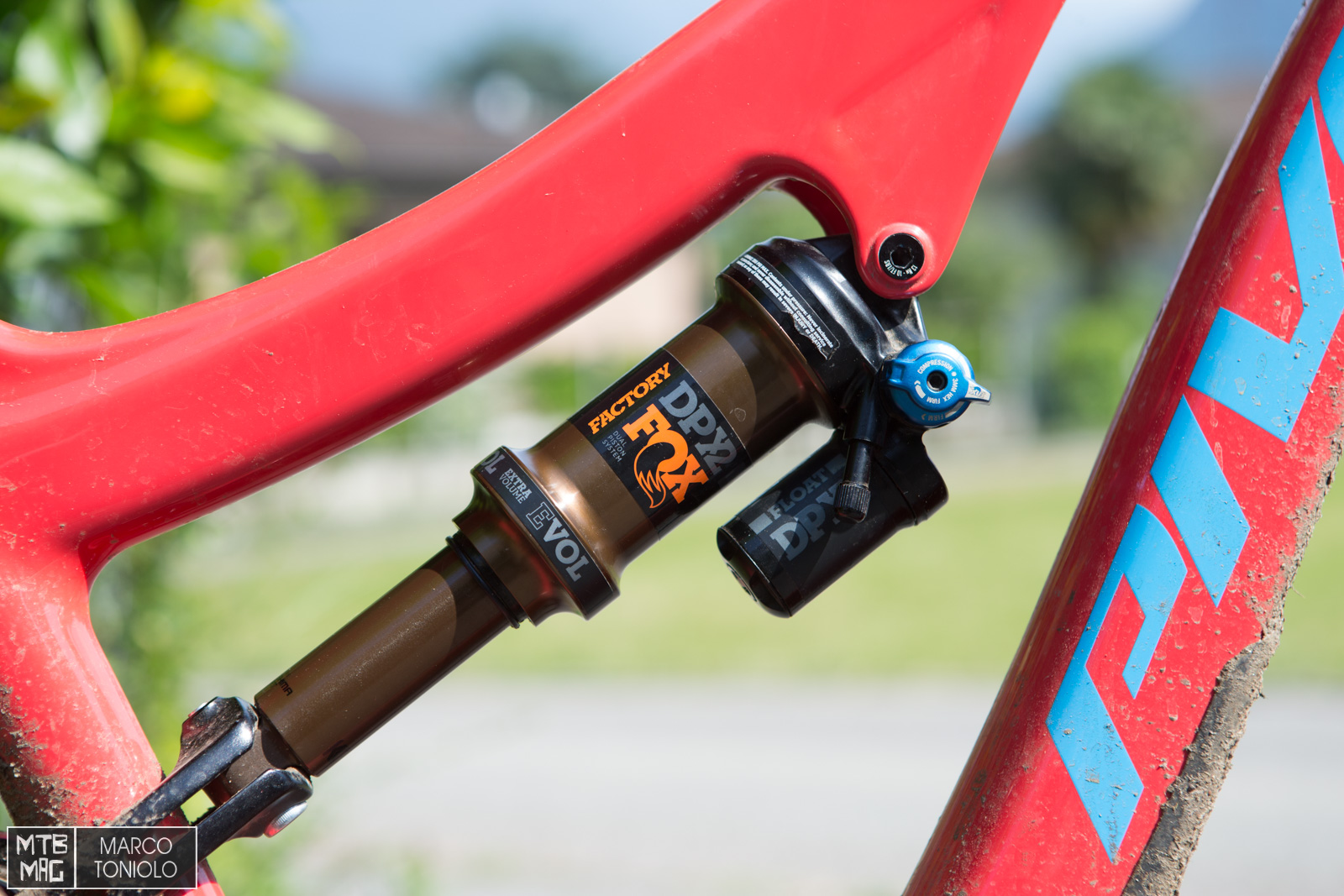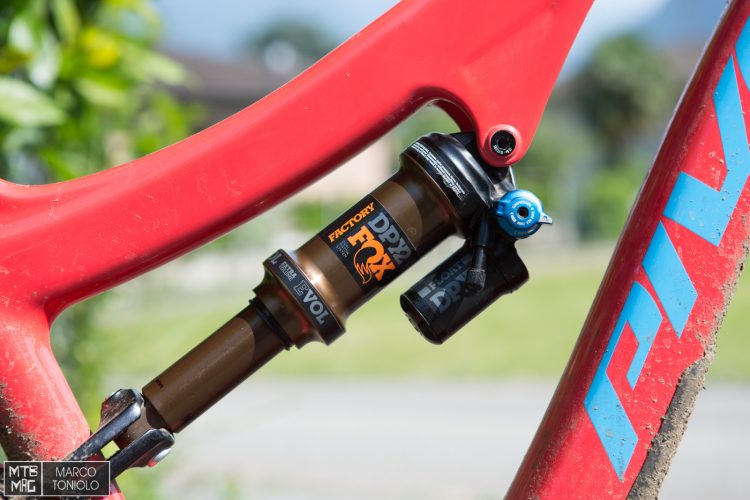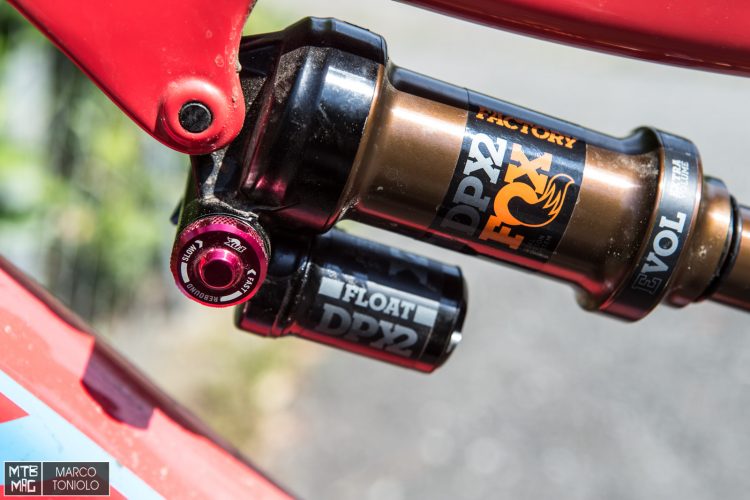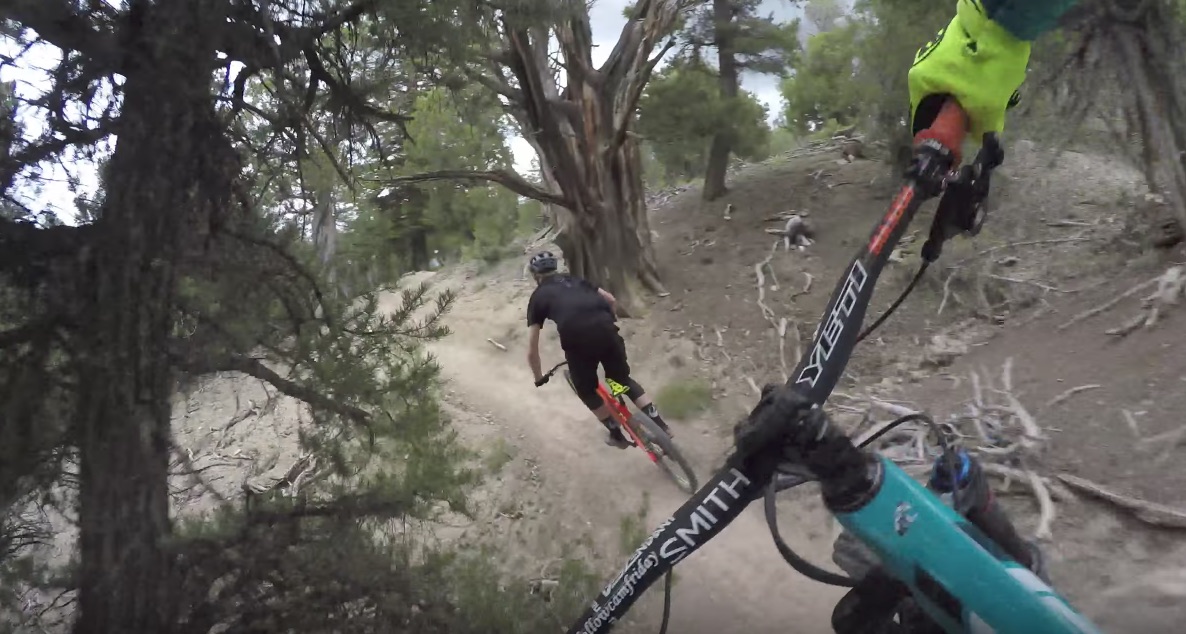Today FOX launches the new DPX2 shock. As the name suggests, it combines elements from both the DPS and the X2, as it is made for the trail/enduro segment. Following the tradition, Fox sent it to us to carry out a test, and we installed it onto our long term test bike, the Pivot Firebird, replacing the Fox X2 and giving us an interesting platform for comparison.
Characteristics
The DPX2 is an air shock with a so called “oil recirculation system”, also know as Twin Tube technology. You can get a bit of information straight from Bill Brown, an engineer from Fox in this article we published some time ago. Compared to “single tube” shocks, “recirculating” shocks generally have lower operating pressures, better small bump sensitivity and better reactions to directional changes.
Anyhow, the DPX2 is a similar system to the X2 but is now lighter and smaller. The measured weights of the two shocks are (length 216mm, travel 64mm) of 524 grams for the X2 and 421grams for the DPX2. On the Firebird, since there’s no bottle cage on the down tube, dimensions are not a problem, but on other bikes, a smaller shock, even compared to the old DPS, can allow to you install a bottle cage where it was not possible, or simply a much easier positioning.
From a technical point of view, compared to the DPS, the two-piston system is seperated to make compression and rebound adjustments completely independent of one another.
Regarding the adjustments, there are three compression levels controlled externally with the blue lever: Open, Medium and Firm, plus 10 compression fine tuning clicks in Open position. For this setting a 2.5 hex-key is required to turn the screw in the center of the blue knob.
Rebound adjustment is now in a much more handy position, unlike on the previous model, where an hex-key was required to reach it. The knob provides excellent grip even wearing gloves.
As you may have noticed, the DPX2 shape is different from that of the DPS: the negative chamber has been slightly redesigned to have a more linear curve in the first 25% of the travel and more support at mid travel as well, following the trend we already described with the Fox 36. Furthermore, the negative chamber design changes according to the travel and length of the shock, which is available both with metric and imperial dimensions.
For the more technical readers, below are the internal models showing how the DPX2 works.
On the Trail
Settings:
• 25% sag.
• 7 rebound clicks from all open
• 215 PSI for 71 kg rider + approx 5 kg including clothes, backpack and protection.
At first, when I looked at the DPX2, I thought FOX had shipped the wrong shock. I thought it was suited to a trail bike and not an enduro weapon such as the Firebird, with 170mm of travel. In particular, it felt ridiculous to replace the X2, a DH shock, with such a small one and have a comparable performance. I was wrong.
Thanks to a firmer hydraulic lock out than on the X2, it has become much easier to pedal the Firebird on the climbs. It is not a usual lock out, an interesting feature is that it reacts to the impacts by opening almost completely, making it more comfortable to climb off-road sections and not only smooth or asphalt tracks in the Firm position. All in all, it also provides a good traction in the Firm position. I wrote “good” because the DPX2 in this position reacts well to the impacts but it doesn’t have such a good small-bump sensitivity as in Open or Medium position. If you ride the classic up-and-down rough trail section, then I suggest you to switch to the Medium position to get more traction.
I was quite skeptical about the behavior on fast and harsh descents. Since it almost didn’t snow this winter and now it has already melted, I could test the DPX2 on a long and harsh trail, where suspension tends to overheat and therefore becomes stiffer as the oil heats up. I took advantage of the cable car in order to have as many descents as possible: the result was pretty amazing. I didn’t notice any issues at all, on the contrary, the DPX2 excelled in terms of smoothness, small bump sensitivity and mid stroke support. All these qualities provide stability, in particular on fast terrain with lots of obstacles, when a nervous bike can easily cause a get out of hand from skipping around like crazy.
Basically, I didn’t miss the X2, and started to appreciate the minimal shape, light weight and compression damping’s 3-position effectiveness of the DPX2 more and more. Speaking of compression, I also worked on the Open position fine tuning, finding the ideal setting at two clicks from the full open. The rear triangle of the Firebird already tends to stay up in the travel and it doesn’t need any extra help to perform nicely, provided that the shock works well, as in this case.
Like all Fox suspension, the DPX2 also becomes more progressive at the end of the travel, a feature which matches the Firebird’s fairly linear kinematics. Actually I found it easier to set the right pressure to avoid bottoming out compared to the X2, with which I often ended up with the O-ring very close to the end of the stroke.
Conclusions
The FOX DPX2 has been a great surprise: in only 421 grams we have a very high performance shock, both uphill and downhill, thanks to the effective and quick 3-positions compression adjustments, and the hydraulics, which provide good sensitivity to small bumps, mid travel support and most of all, impressive resistance to overheating, despite its small dimensions.
Price
DPX2 Factory (the only version available in aftermarket): $549 US/€739 EUR



















